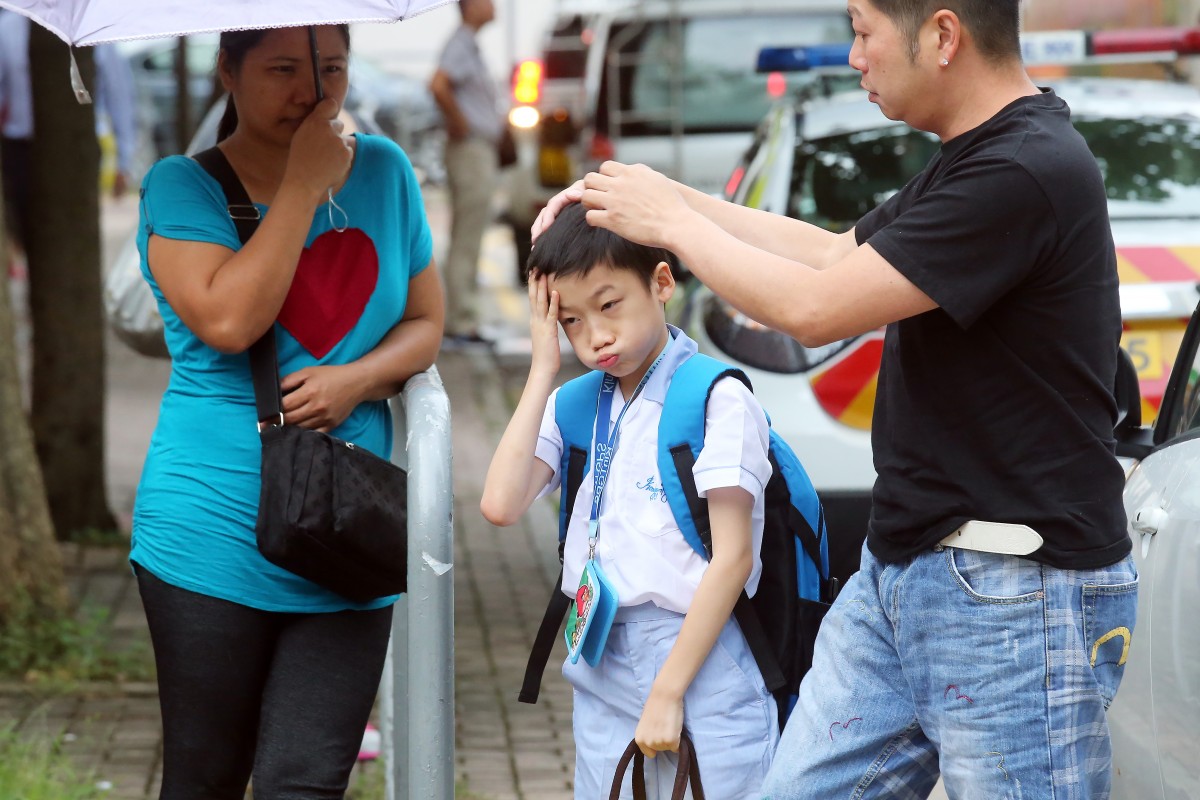
Face Off: Should primary school students learn simplified Chinese?
Each week, our two teenagers will debate a hot topic. This week...Should primary school students learn simplified Chinese?
 Students on their first day back to school in Kowloon Tong.
Students on their first day back to school in Kowloon Tong. Naz Iraj, 17 , St Margaret’s Girls’ College
Traditional Chinese has long been the preferred style in Hong Kong, but that doesn’t mean we have to hold on to it forever. Simplified Chinese is comparatively easier, and faster to learn, especially for primary school students. The beauty of simplified Chinese characters is in the name: they are simplified. They contain fewer strokes and can be easier to remember for new learners.
Traditional Chinese embodies the romantic, historical elements of language that make it far better suited to arts and design, for example, calligraphy. Simplified Chinese is better for daily use, and so it should definitely be encouraged. After all, simplified Chinese characters are considered acceptable by the Hong Kong Examinations and Assessments Authority. So it should not be a problem for primary students to learn simplified Chinese instead of traditional, and do well in exams.
The debate over using traditional or simplified Chinese has formed a cultural battlefield between Hong Kong and China for decades. As Hong Kong is a part of China, it is important that Hong Kong citizens connect with mainlanders. And as primary school students are the future of Hong Kong, they should learn simplified Chinese to enhance ties with our motherland.
The existence of two concurrent language systems has always hindered communication between mainland China and Hong Kong. If primary school students were to learn simplified Chinese, it would prove beneficial for our city’s future.
Henry Lui, 16, Sha Tin College
Should students in Hong Kong learn simplified Chinese? Yes, definitely. Should they be learning it primary school? No.
Before we dive into the reasons why teaching simplified Chinese in primary school would be counter-intuitive, let’s drop all these flawed notions of how we “are obliged protect Cantonese culture” by keeping traditional Chinese –it’s a load of overly romantic nonsense and a fairly weak case to present.
The real argument against teaching simplified Chinese at such an early stage is based on issues of practicality.
In the status quo, traditional characters are the norm. They’re used everywhere in the city. Hence there is the expectation that these primary school students will continue to be taught traditional Chinese in addition to simplified Chinese. This is where the problem lies.
At Key Stage 1 and 2, students are still handling the basics of the language and working on their core communication skills. At such a critical stage, teaching them two sets of written Chinese characters, plus English, would be too much to bear. Even the most competent students - who may well be capable of juggling three forms of written language - may still mix up the two character sets at times.
Instead of teaching simplified Chinese at such an early stage, it should be introduced later on, as part of secondary education. As secondary students have matured and developed confidence in their language abilities, the process of converting to simplified would be much quicker. Chances of muddling up the characters would be far smaller, too. Associate Professor Tse Ka-ho from the Hong Kong Institute of Education agrees with this counter-model.
As it is well known that learning the simplified script tends to be quite a speedy process given that students already have a good grasp of the traditional script, the argument that teaching it in primary would “save time” is null and void. In fact, it is likely to take up even more time, as the students have not had a clear understanding of either system at that stage.
No one is foolish enough to deny the benefits of learning simplified Chinese; the main area of contention is when and where it should be taught. Many pundits are against teaching so many language systems at such a young age, and rightly so. Primary education is not the right time nor place for both traditional and simplified Chinese to be taught at the same time.